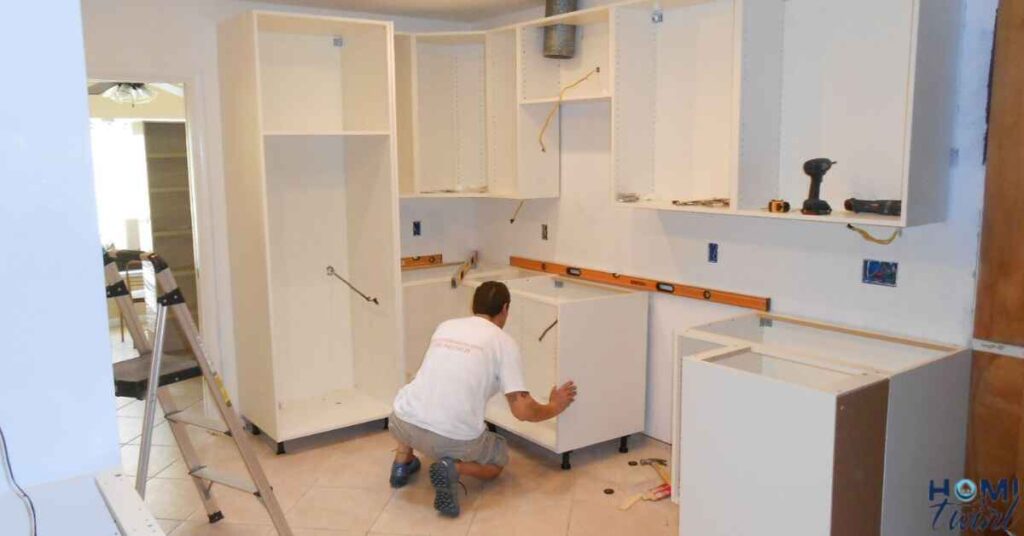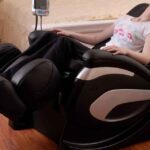Can You Put Cabinets On Top Of LVP? is a common question among homeowners considering vinyl plank flooring (LVP) installation.
The answer varies based on the installation method. For click-lock LVP, it’s advised not to install cabinets on top due to the flooring’s need for expansion and contraction space. However, with glue-down LVP, cabinets can typically be installed over the flooring.
Understanding the differences in installation methods is crucial for ensuring the longevity and stability of both the flooring and cabinetry.
Can You Put Cabinets On Top Of LVP Flooring?
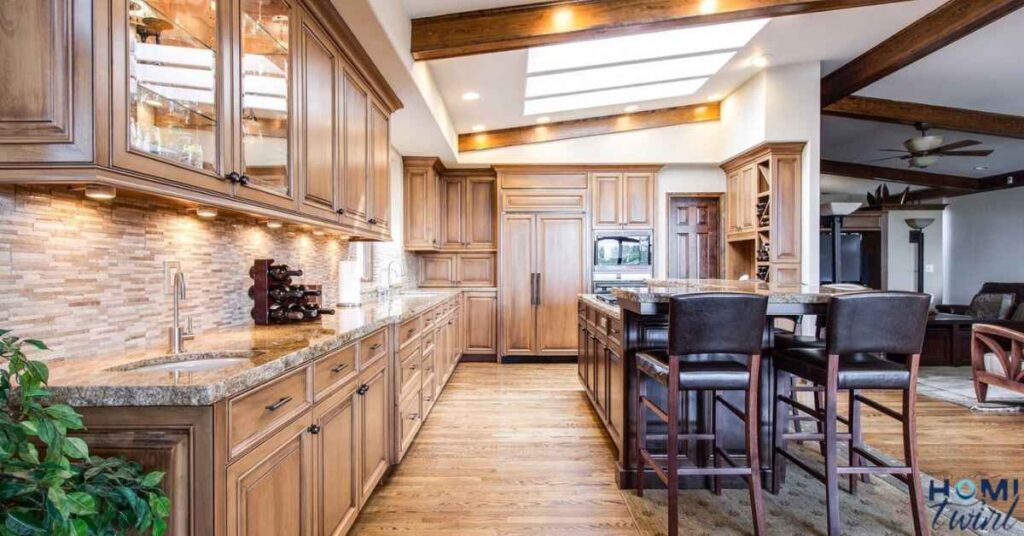
Luxury Vinyl Plank (LVP) flooring has gained immense popularity in recent years due to its stunning visuals, durability, and ease of installation. As homeowners and renovators explore the versatility of LVP, a common question arises: Can you put cabinets on top of LVP flooring? The answer is not a straightforward yes or no, as it depends on several factors. In this comprehensive guide, we’ll explore the considerations, best practices, and potential issues to help you make an informed decision.
The Short Answer
In most cases, it is possible to install cabinets directly on top of LVP flooring, provided that the installation is done correctly and the flooring meets specific requirements. However, certain precautions and guidelines should be followed to ensure a successful and long-lasting result.
Read This Blog: CAN YOU PAINT HINGES ON CABINETS
Understanding LVP Flooring
Before delving into the specifics of installing cabinets on LVP, it’s essential to understand the characteristics of this flooring type. LVP is a multi-layered product consisting of a rigid core, typically made of wood plastic composite or stone plastic composite, topped with a printed vinyl layer that mimics the appearance of natural materials like wood or stone.
One of the key advantages of LVP is its thickness, which can range from 4mm to 8mm or more. This thickness, combined with the rigid core, provides a stable and sturdy base that can potentially support the weight of cabinets. However, it’s crucial to consider the specific thickness of your LVP flooring and the weight of the cabinets you intend to install.
Click-Lock Installation
Many LVP products feature a click-lock installation method, where the planks interlock together without the need for adhesives. While this installation method is popular for its ease and flexibility, it may not be the best choice if you plan to install cabinets on top.
Click-lock LVP floors can be prone to shifting or separating over time, especially under the concentrated weight of heavy cabinets. This movement can lead to issues such as gaps forming between planks, compromising the integrity of the flooring and potentially causing structural damage.
If you choose to install cabinets on a click-lock LVP floor, it’s recommended to take additional measures to secure the flooring and prevent movement. This may include using appropriate underlayments, securing the planks to the subfloor with construction adhesive, or using floor-leveling compounds to create a flat, stable surface.
Glue-Down Installation

For a more permanent and secure installation, many professionals recommend opting for a glue-down LVP application when planning to install cabinets. In this method, the LVP planks are adhered directly to the subfloor using a specialized adhesive.
Glue-down installations create a seamless, solid surface that is less likely to shift or separate under the weight of cabinets. This method also minimizes the risk of gaps forming between planks over time, ensuring a cohesive and visually appealing floor.
When installing cabinets on a glue-down LVP floor, it’s essential to follow the manufacturer’s guidelines for adhesive selection, application, and curing times. Proper preparation of the subfloor is also crucial to ensure a flat and level surface for the cabinets.
Preparing the Subfloor
Regardless of the LVP installation method (click-lock or glue-down), the condition of the subfloor plays a crucial role in the success of installing cabinets. A level, clean, and properly prepared subfloor is essential to prevent issues such as unevenness, squeaking, or premature wear.
If the subfloor is uneven or has imperfections, it’s recommended to use self-leveling underlayments or floor patching compounds to create a smooth, flat surface. This step is particularly important for installing heavy or floor-to-ceiling cabinets, as any unevenness can cause stress and potential damage to the flooring and cabinets over time.
Also Read This Blog: CAN YOU INSTALL CABINETS ON TOP OF VINYL PLANK FLOORING
Additionally, the subfloor should be thoroughly cleaned and free from debris, moisture, or any other contaminants that could interfere with the adhesion or integrity of the LVP flooring and cabinet installation.
Cabinet Installation Best Practices
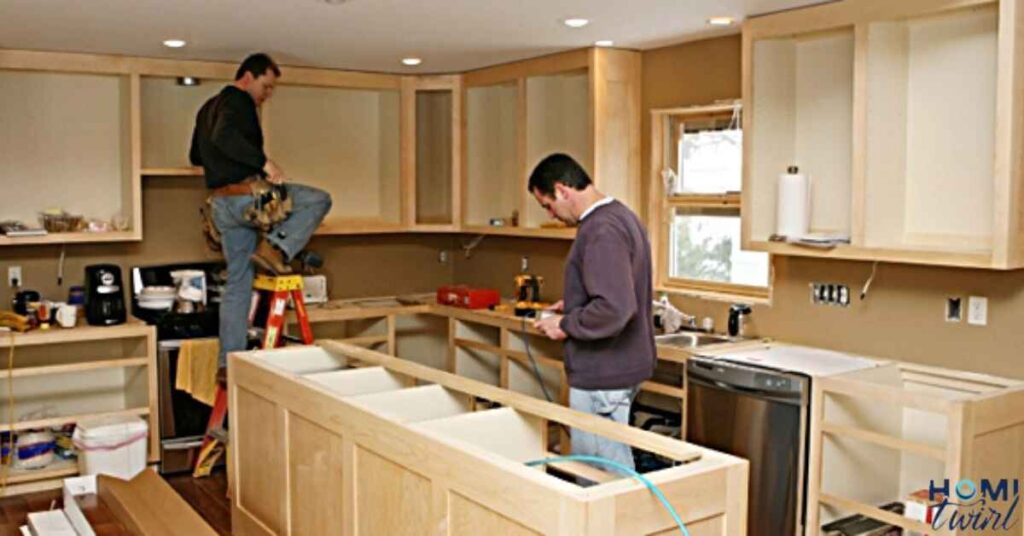
Once you’ve confirmed that your LVP flooring can support the weight of the cabinets and prepared the subfloor properly, it’s time to focus on the installation process itself. Here are some best practices to follow.
- Floor Protection: Before installing the cabinets, it’s essential to protect the LVP flooring from scratches, dents, and heavy foot traffic. Use appropriate floor protection, such as ram board or heavy-duty cardboard, to create a safe work area.
- Weight Distribution: Distribute the weight of the cabinets evenly across the LVP flooring. This can be achieved by using appropriate cabinet levelers or shims, ensuring that the weight is not concentrated in a single area.
- Wall Anchoring: In addition to resting on the LVP floor, it’s recommended to securely anchor the cabinets to the wall studs. This will provide additional support and stability, reducing the risk of the cabinets shifting or putting excessive pressure on the flooring.
- Base Cabinets: For base cabinets, consider installing them first before clicking or gluing down the LVP planks around them. This approach can simplify the installation process and ensure a seamless fit between the cabinets and the flooring.
- Wall-Hung Cabinets: If you’re installing wall-hung cabinets, ensure that the support system (such as a ledger board or hanging rail) is securely anchored to the wall studs and not solely relying on the LVP flooring for support.
- Floor-to-Ceiling Cabinets: For floor-to-ceiling cabinets, proper weight distribution and anchoring to the wall studs are crucial. These cabinets can exert significant weight and pressure on the flooring, so it’s essential to follow the manufacturer’s guidelines and consult with a professional installer if necessary.
Potential Issues to Watch For
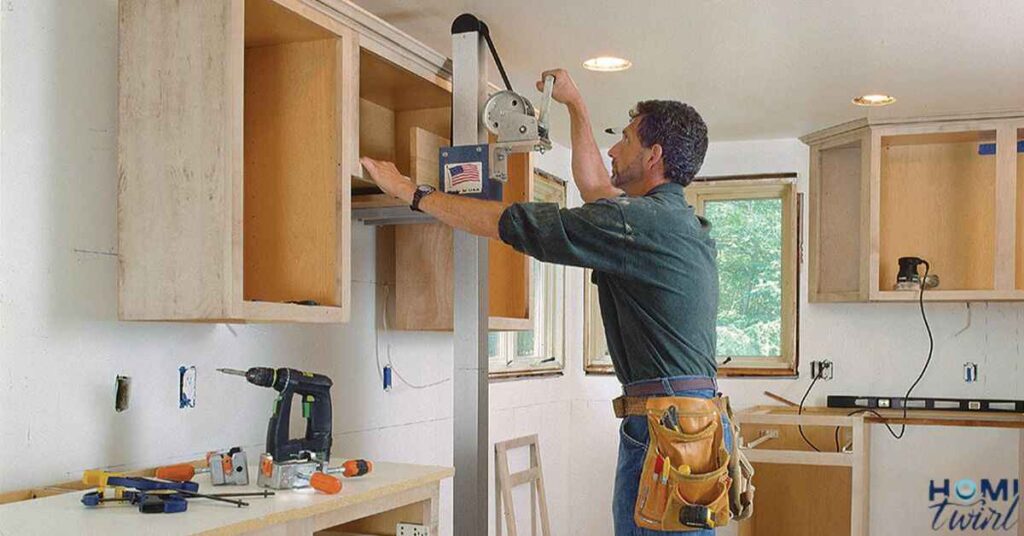
While it is possible to install cabinets on top of LVP flooring, there are some potential issues to be aware of.
- Denting or Dips: Over time, the concentrated weight of heavy cabinets or appliances can cause denting or dips in the LVP flooring, especially if the subfloor preparation was inadequate or the weight distribution was not properly addressed during installation.
- Difficulty in Future Replacement: If you need to replace the LVP flooring in the future, the presence of cabinets can make the process more challenging and may require partial or complete cabinet removal.
- Temperature and Humidity Changes: LVP flooring can expand and contract slightly due to temperature and humidity fluctuations. If cabinets are installed directly on top of the flooring, this movement may be restricted, potentially causing issues such as buckling or separating planks.
To mitigate these potential issues, it’s essential to follow the manufacturer’s guidelines, seek professional advice if necessary, and regularly inspect and maintain the flooring and cabinets to address any concerns promptly.
In conclusion, while it is generally possible to install cabinets on top of LVP flooring, the success of this endeavor depends on several factors, including the type of LVP installation (click-lock or glue-down), proper subfloor preparation, and adherence to best practices during cabinet installation. By considering the weight of the cabinets, ensuring even weight distribution, and taking necessary precautions, you can create a beautiful and functional space while protecting the integrity of your LVP flooring.
You may also like:
- How to Repair LVP Flooring – Expert Guide
- How To Protect LVP Flooring?
- Hiring a Flooring Installer
- Help! My Flooring has been Discontinued!
- Is LVP Floor Anti-Static?
- Comparing Laminate Flooring with Other Flooring Types
- How is LVP Flooring Made?
- Can LVP Floor Be Used for Indoor and Outdoor Applications?
- Pros and Cons of LVP Plank Floors
- Laminate Flooring vs. LVP Flooring Comparison
Frequently Asked Question
Can I install click-lock vinyl flooring under cabinets?
No, it’s not recommended. Click-lock flooring needs space to expand and contract, and cabinets can inhibit this movement, potentially leading to damage.
Can I put heavy furniture on top of vinyl plank flooring?
Yes, you can, but it’s advisable to use felt pads under furniture legs to prevent scratching and damage to the flooring surface.
Do I need to uninstall click-lock vinyl flooring if I want to install cabinets later?
Ideally, yes. Installing cabinets after flooring allows for easier maintenance and adjustments in case of leaks or design changes.
Are floating cabinets a good option for rooms with click-lock vinyl flooring?
Yes, floating cabinets are ideal for rooms like bathrooms and laundry areas, as they don’t put weight directly on the flooring.
Can glue-down vinyl plank flooring be installed under cabinets?
Yes, it’s generally safe to install glue-down vinyl plank flooring under cabinets since it doesn’t require space for expansion like click-lock flooring does.
Will temperature changes affect vinyl plank flooring under cabinets?
Glue-down vinyl plank flooring is less susceptible to temperature changes compared to click-lock, making it suitable for cabinet installations.
How should I protect vinyl plank flooring under heavy cabinets?
Using furniture coasters or felt pads under cabinet feet can help distribute weight and prevent indentations or damage to the flooring.
What are the benefits of installing vinyl plank flooring before cabinets?
Installing flooring before cabinets allows for easier adjustments, maintenance, and the option to change the flooring layout without affecting the cabinets.
Conclusion
Whether you can put cabinets on top of LVP (Luxury Vinyl Plank) flooring depends on the installation method and the type of LVP used. Click-lock LVP requires space for expansion and contraction, making it unsuitable for cabinet installations. On the other hand, glue-down LVP can typically withstand the weight of cabinets since it adheres firmly to the subfloor.
Understanding the differences between these installation methods is essential for ensuring the longevity and stability of both the flooring and cabinetry. By following manufacturer guidelines and considering factors such as temperature changes and maintenance, homeowners can make informed decisions about installing cabinets on top of LVP flooring, ensuring a functional and visually appealing space for years to come.

